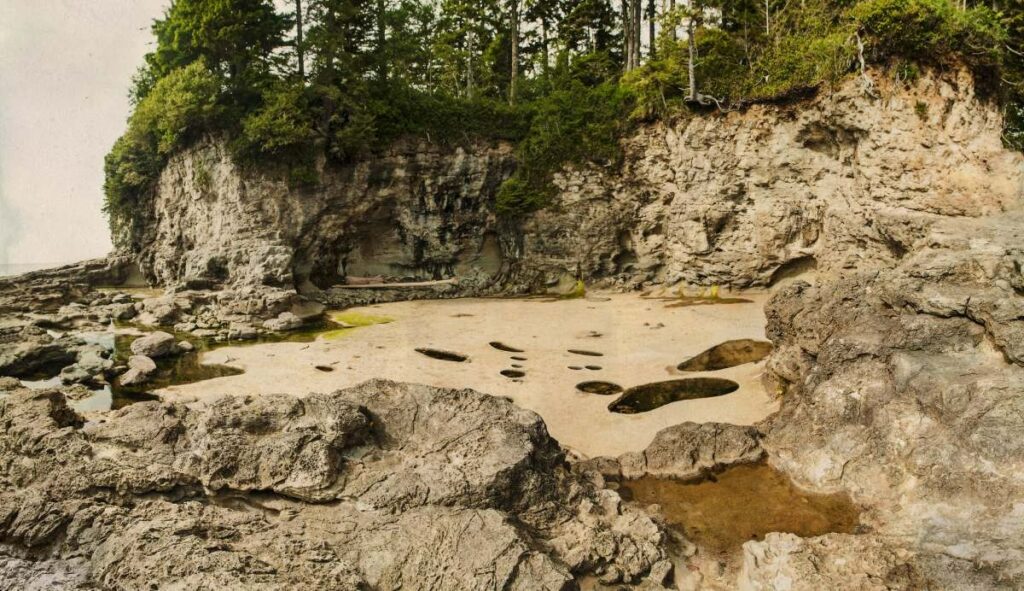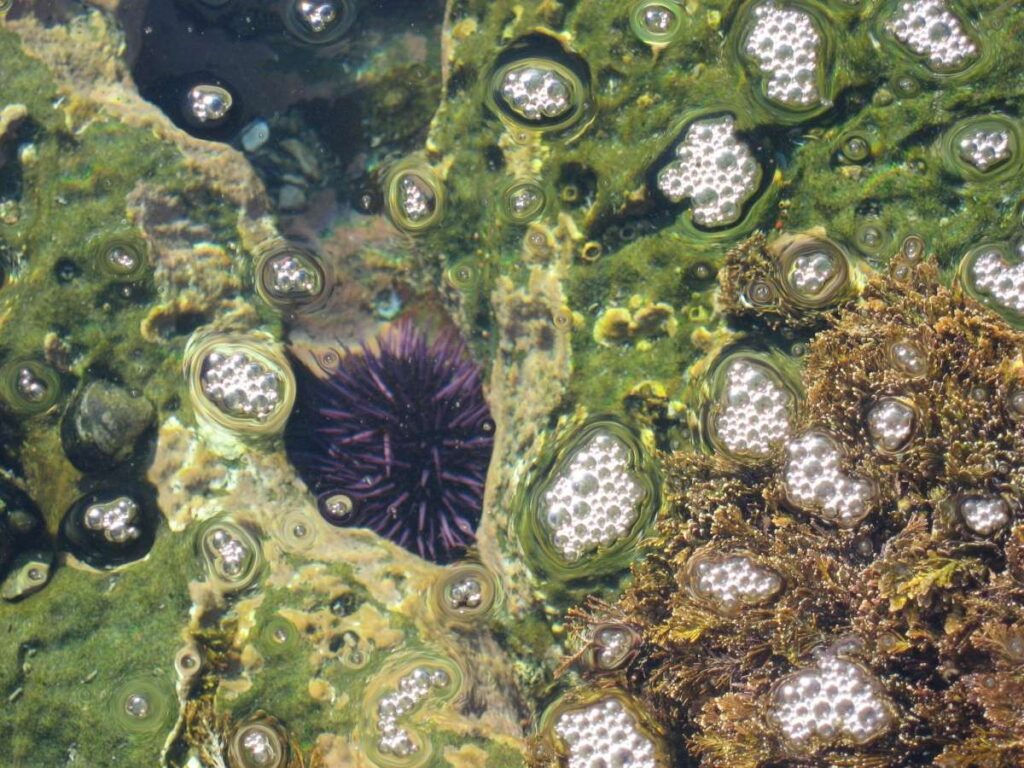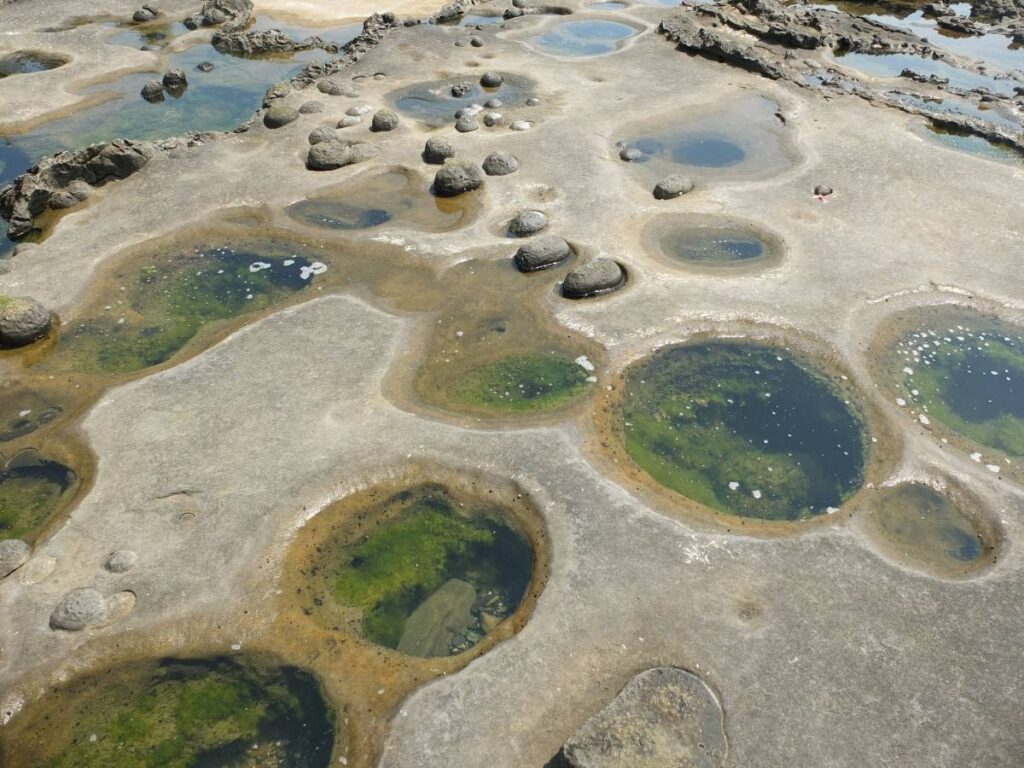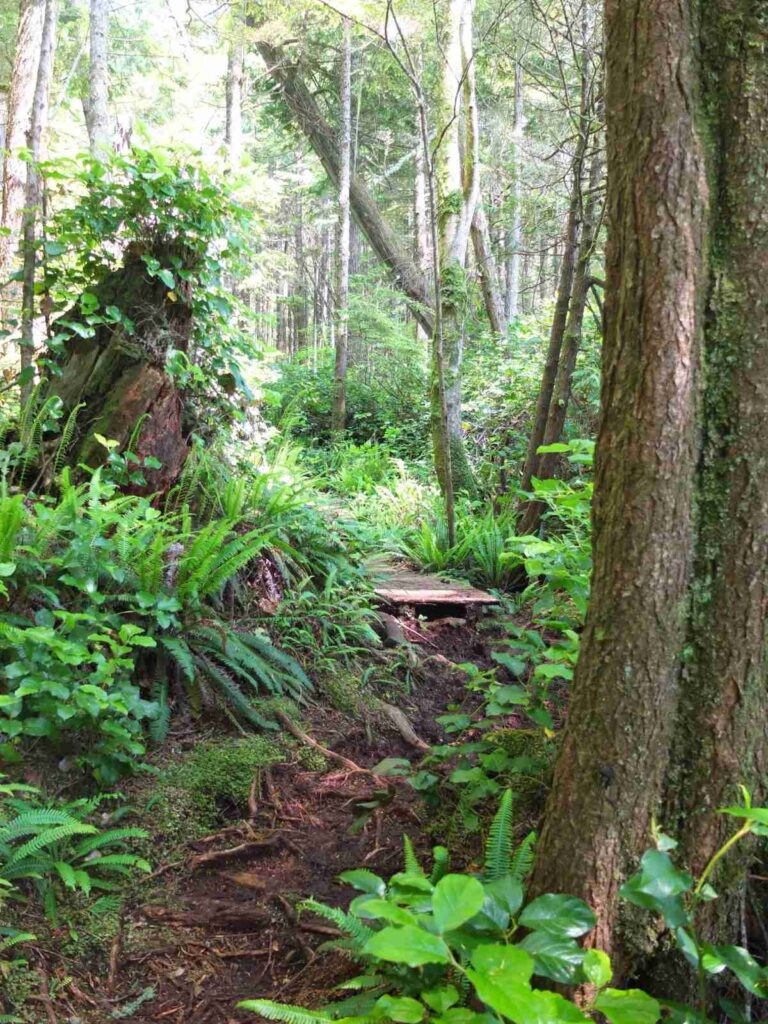
Vancouver Island, a jewel on Canada’s West Coast, boasts a treasure trove of natural wonders. Among them, Botanical Beach in Juan de Fuca Provincial Park stands out for its unique ecosystem – a tapestry woven by the relentless ocean and sculpted by time.

Vancouver Island, a jewel on Canada’s West Coast, boasts a treasure trove of natural wonders. Among them, Botanical Beach in Juan de Fuca Provincial Park stands out for its unique ecosystem – a tapestry woven by the relentless ocean and sculpted by time.
Millions of years of geological drama etched a masterpiece onto Botanical Beach. The relentless waves carved out arches, sea caves, and the very platforms where the tide pools reside. Smooth sandstone and granite dominate the beach, their surfaces adorned with wind-sculpted textures and clinging life forms. This interplay between nature’s forces and time’s patient artistry is a sight to behold.

The magic truly unfolds with the receding tide, unveiling a breathtaking display of marine life in the exposed tide pools. These shallow, rocky pools become a vibrant sanctuary for an astonishing array of creatures. Vivid starfish in purple, orange, and red cling to the rocks, their spiny forms contrasting with the emerald green of swaying anemones. Sea urchins with spiky armor graze on algae, while schools of tiny fish dart between the crevices. Mussels huddle together, their blue-black shells creating a mosaic on the pool’s floor.

Beyond the captivating visuals lies a complex and fascinating ecosystem. Each tide pool is a microcosm of life, a delicately balanced environment where survival depends on the rhythm of the tides. During high tide, the pools are submerged, allowing for an exchange of nutrients and oxygen-rich water. As the tide recedes, the pools become isolated pockets, forcing the inhabitants to adapt. Some species, like barnacles, clamp onto the rocks, weathering the exposure with their sturdy shells. Others, like sea stars and anemones, retract their feeding tentacles, conserving energy until the next high tide.

The intertidal zone is a fragile environment. Exploring the tide pools is an enriching experience, but it’s crucial to tread carefully and leave no trace. Time your visit for low tide using online tide tables. Observe the creatures from a distance and avoid touching them or the environment. Refrain from removing rocks, shells, or any living organisms. Respect the wildlife and avoid disturbing them in their natural habitat.

Botanical Beach offers more than just a glimpse into the intertidal zone. The surrounding Juan de Fuca Provincial Park is a haven for birdwatchers, with opportunities to spot bald eagles, seabirds, and migrating waterfowl. The adventurous can explore the Great Botanical Loop Trail, which winds through the coastal forest, offering stunning vistas of the ocean and the chance to encounter terrestrial wildlife.

Botanical Beach is a place where time seems to slow down. It’s an invitation to immerse yourself in the wonders of the natural world, to appreciate the intricate dance between geology and marine life. Whether you’re a seasoned naturalist or simply curious about the wonders that lie beneath the waves, Botanical Beach promises an unforgettable encounter with the Pacific Ocean’s hidden jewels.

Leave a Reply